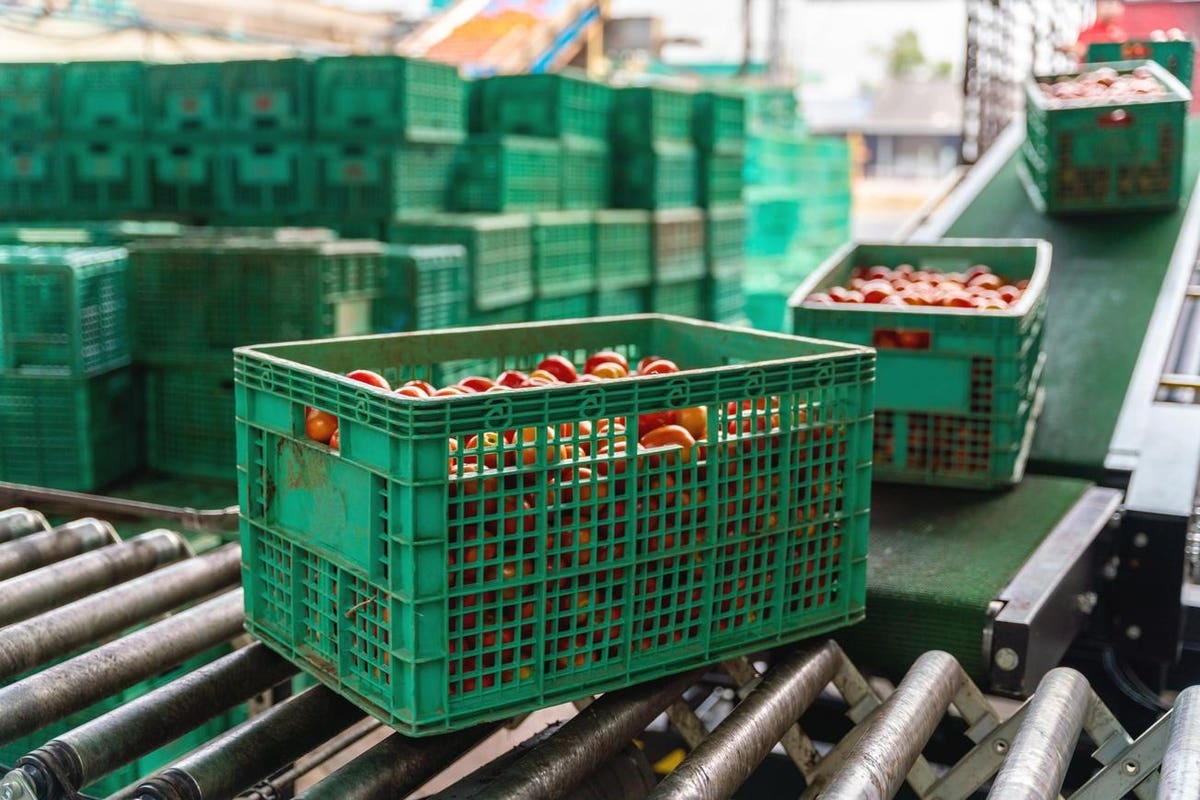Joe Monaghan, CEO of Worldwide Logistics Group.
Shifts in agricultural trends and cooking preferences are changing how frequently perishable goods move through supply chains. Technavio has forecast the food and beverage warehousing market to grow at a compound annual growth rate of 18.76% through 2027, resulting in a five-year market growth of more than $366 million.
Shippers must meet regulatory requirements in maintaining food safety standards as they move and store these products. For some, it may be a totally new way of doing business that requires more oversight, depending on how the freight is moved. Research from Our World in Data shows nearly 60% of food is shipped by ocean, with trucks (30.97%) and trains (9.9%) lagging far behind. Only 0.16% is shipped by air.
What considerations do shippers need to make for food products at rest and in motion to maintain compliance and protect brand reputation? Let’s look at food-specific requirements, how to meet them and what challenges might arise with a new process.
Navigating A New Sector
Organizations entering the food logistics space may have to deal with new certification compliance. Most food retailers require certification by one of the accredited food organizations such as AIB International, which follows standards from the Global Food Safety Initiative. The Food and Drug Administration (FDA) is another agency that organizations may need to register with and, depending on whether or not meats are stored, the United States Department of Agriculture (USDA). Other notable food certifications include Safe Quality Food (SQF), which addresses food safety and quality across the supply chain, the British Retail Consortium (BRC), which helps the food industry comply with U.K. and EU food safety laws, and ASI, which is a food safety accreditor.
These entities are often more strict than traditional supply chain compliance agencies so they can ensure the quality of the stored food. For instance, in my experience, pest control is a top obligation—every opening in a facility must be covered and sealed. A plan to keep rodents out with bait stations on the exterior of the building and traps on the interior is critical. A pest control vendor’s log of activity within the facility could document that compliance is maintained and would be called upon if there were an FDA audit.
Restricting sunlight is another crucial consideration. Dock doors must remain closed unless cargo is being loaded or unloaded. Within a warehouse, an organization should also use electric-powered handling equipment instead of those powered by propane or liquefied natural gas. Any gas-powered equipment is at risk of leaving residue and odor behind that could contaminate the food.
Other safety considerations include chemical control to restrict the use of potentially harmful cleaning products around food, color coding equipment like brooms and dustpans for specific use like glass or dust, and a regular floor cleaning and polishing schedule.
Moving Food Cargo
The inbound or outbound movement of any food container or truckload requires a thorough inspection to ensure the vessel is sealed and there’s no water leakage, debris or odors. If a previous load included cargo with a distinct smell, like rubber tires or chemicals, those residual odors can affect the quality of the food.
It’s imperative to maintain temperature and humidity control when cargo is moving and have procedures in place if they fluctuate. Temperature tags within containers can inform operations teams of conditions and how long a container may be out of a necessary temperature range. Shippers must take every measure possible to maintain temperature and humidity because food cargo is sensitive to spoilage. According to the United Nations, 14% of global food waste occurs during supply chain processes.
Facing Challenges And Finding Solutions
Several challenges can arise that slow down supply chains, but best practices can leave organizations well-prepared. For instance, if insects or other contaminants have infiltrated a container, those products must be quarantined physically and from an inventory control perspective within a warehouse management system. Having a plan can make detection more manageable and reduce the chance of an order getting allocated when a safety measure should have held it back.
Recall processes also pose a challenge. Any product that enters a facility needs a recall plan. Each batch should have a lot number associated with it so it can be easily identified. Let’s say a product left a facility and the manufacturer has recalled it. Food warehouses must quickly identify that batch within their inventory and stop them from advancing within the supply chain. Similarly, shippers need to be able to track those batches’ routes and notify the stakeholders expecting the cargo.
Creating and maintaining these standard operating procedures can save time if any issues arise. The stakes are raised to ensure proper conditions when the cargo is a perishable food product. Following these best practices can reduce liability and audits so organizations can maintain their reputation, win new business and keep their supply chains efficient.
Forbes Business Council is the foremost growth and networking organization for business owners and leaders. Do I qualify?
Read the full article here





